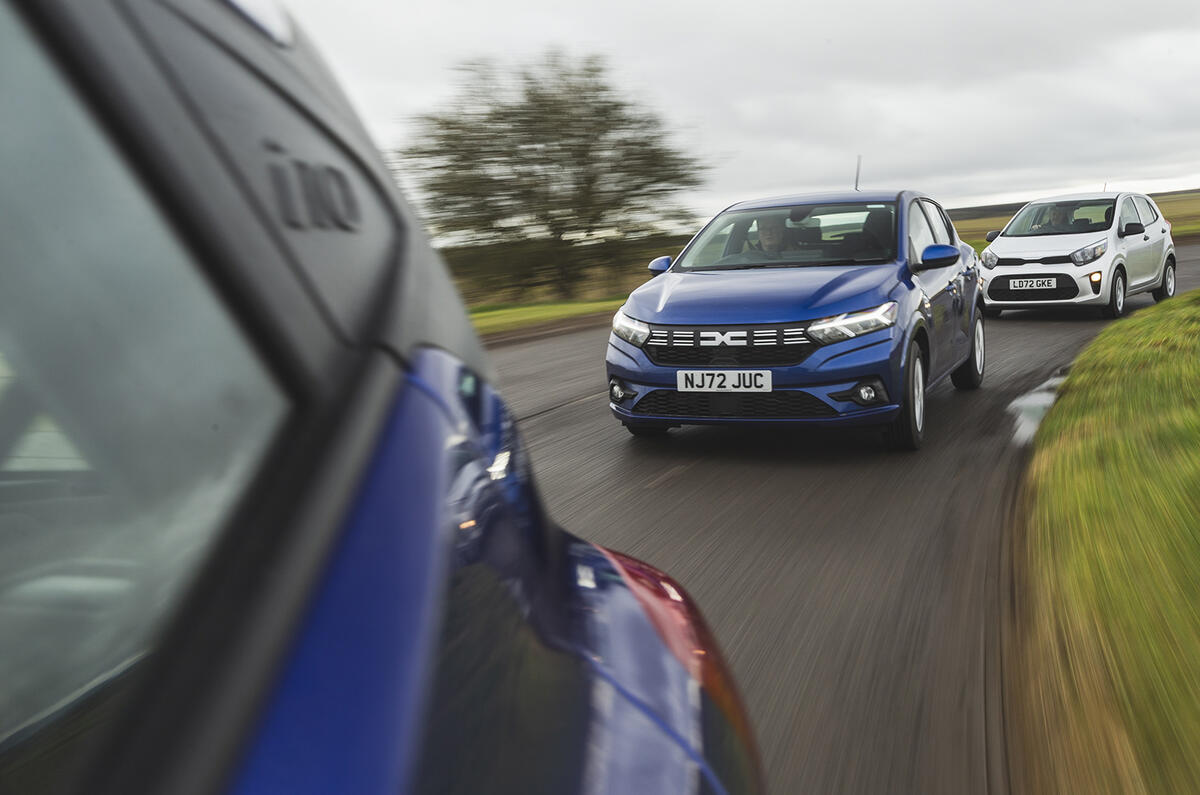Listed: the UK’s cheapest cars
Despite inflation, the cost of living crisis and political uncertainty, new cars in the UK can still be reasonably cheap
News


by Jack Warrick and Murray Scullion
6 mins read
20 February 2025
Share
The cheapest new cars even just a couple of decades ago would have been sub-par, uneconomical and unreliable.
In 2024, however, even the cheapest come from manufacturers with a proven track record, dealerships up and down the country and a decent warranty, while the best cheap cars themselves are genuinely brilliant.
The values of cars both new and used have been newsworthy in recent times because of their episodic increases and decreases.
Used electric car prices are rock-bottom, while the RRP of new cars skyrockets. The now off-sale Ford Fiesta increased in list price by £10,000 from 2013 to 2023, for instance.
If you haven’t looked at new car prices for more than a decade, you may be surprised. Nevertheless, these are the very cheapest new cars on sale, ordered by their list prices.
1. Dacia Sandero
8
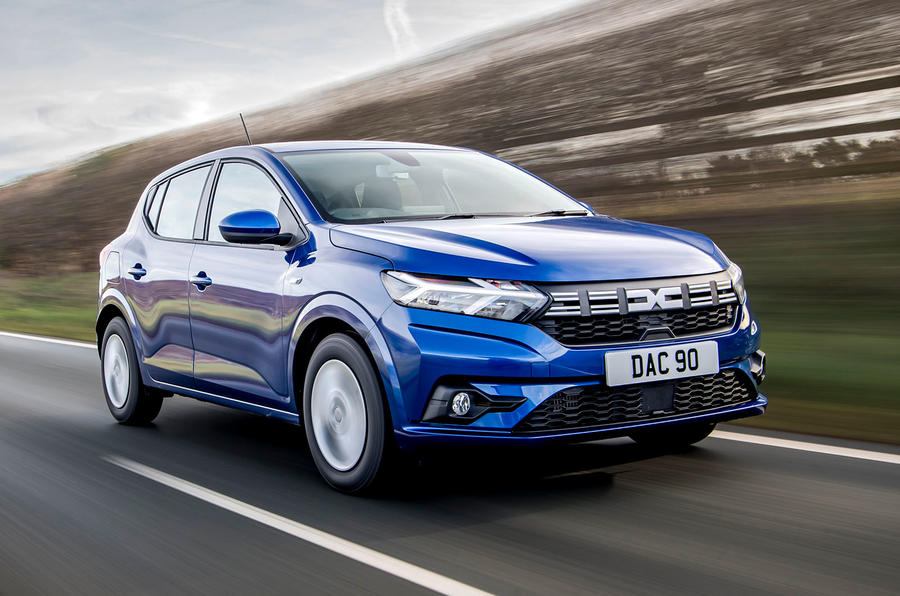
- Design8
- Interior7
- Performance7
- Ride & Handling8
- Costs9
Pros
Comfortable
Lots of space
Ergonomic interior
Cons
Poor safety rating compared with rivals
Quite noisy
Badge will still put some people off
Price: £14,200
Dacia’s top model – and the second best-selling car in Europe for 2024 – is cracking value as well as Britain’s cheapest new car.
The Sandero used to appeal simply because it cost little; now it’s likeable simply because it’s a really good car.
It’s a fully fledged supermini, complete with seating for five and a 328-litre boot, offering the same kind of space as the Skoda Fabia.
It’s surprisingly fun, too. There’s comparatively little body roll and it really flows across a road. It’s not quite class-leading in terms of how it drives, but for the price, little can beat it.
Base-spec cars come with a 1.0-litre turbo petrol engine, and there’s an LPG dual-fuel option for eco warriors on a shoestring. The gearbox may be a tad clunky, but the brakes bite well, even in the wet.
Read our Dacia Sandero review
Save money on a Dacia Sandero with What Car?
Finance this car with Drivenfi
Latest Reviews

Mercedes-AMG CLE 53
8

Volkswagen Tiguan
7

Honda Civic Type R
9

Used BMW 3 Series Touring 2012-2019 review
9
Used BMW 3 Series Touring 2012-2019 review

Aston Martin Vantage Roadster
Read our review
Car review

Citroen C3
The jostling to fill the supermini void left by the Ford Fiesta continues with a model that’s all about comfort
Back to top
2. Citroën C3
7
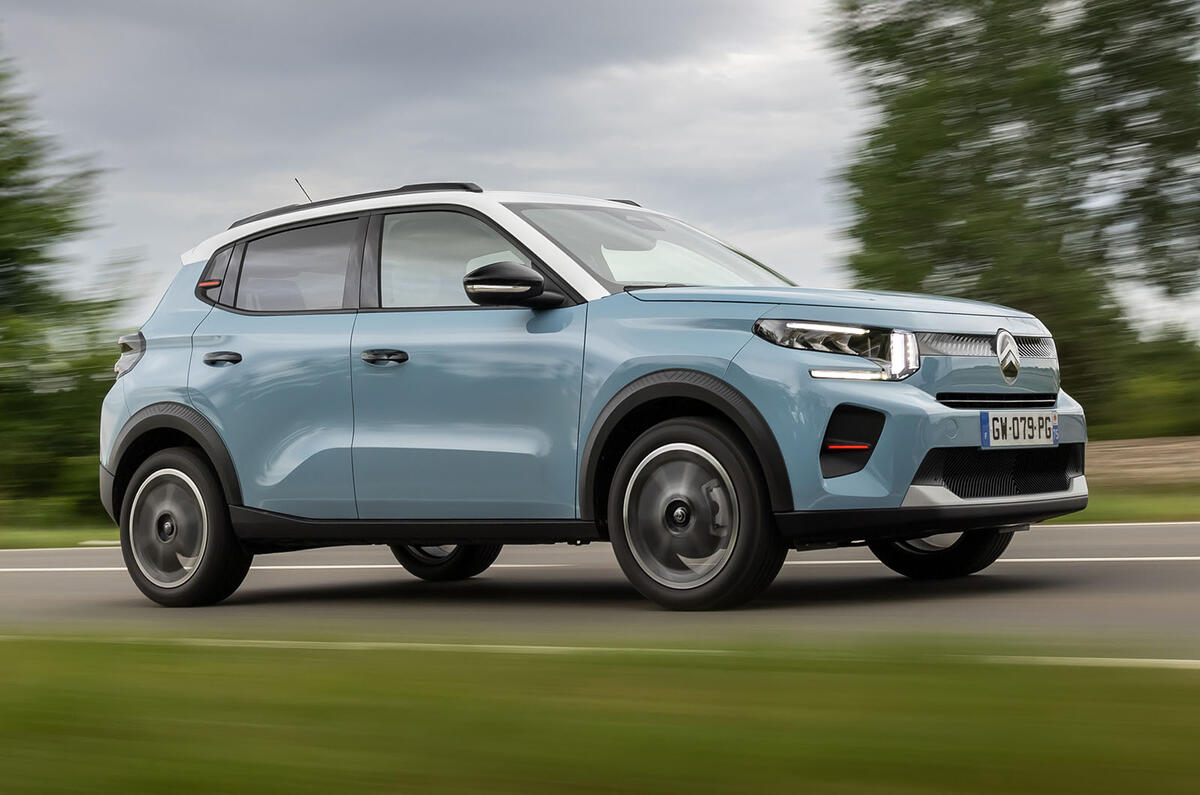
- Design7
- Interior8
- Performance7
- Ride & Handling8
- Costs9
Pros
Stylish for this end of the market
Composed ride
Soft seats
Cons
The Renault Clio is a better all-rounder
Rivals handle better
Vague long-throw shift on gearbox
Price: £17,990
The Citroën C3 is still one of the UK’s cheapest cars, despite its recent redesign.
The C3 makes for an interesting addition to the supermini class and is the latest evidence that the death of the Ford Fiesta doesn’t mean the supermini concept is doomed too.
The new fourth-generation C3 is a big step up from its predecessor, with a focus on driver comfort and ride quality.
It’s powered by a 1.2-litre three-cylinder petrol engine with 99bhp, making it ideal for darting about through town. There’s a mild hybrid on the way too, while the electric ë-C3 comes in at just over £20,000.
Standard equipment is decent for the price too, with a head-up display, ‘comfort seats’, a 10.0in touchscreen and automatic headlights all included on the entry-level specification.
Read our Citroën C3 review
Save money on a new Citroen C3 with What Car?
Finance this car with Drivenfi
3. Dacia Spring
8
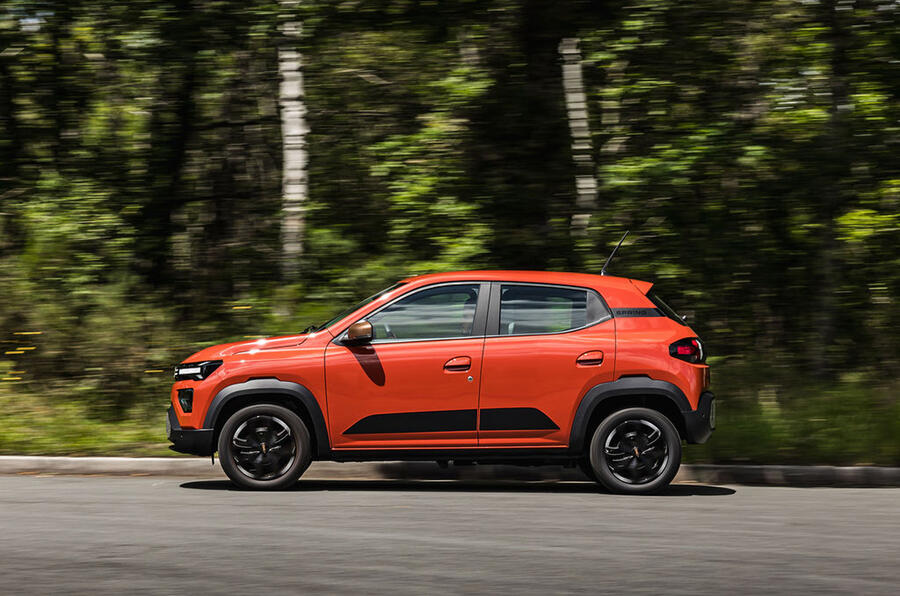
- Design7
- Interior7
- Performance6
- Ride & Handling8
- Costs10
Pros
Especially cheap for an EV
Lighter than other EVs
Good boot space
Cons
Fairly slow charging speed
Lack of seat adjustability
Fair bit of wind noise
Price: £14,995
The Dacia Spring is the first electric car ever to make its way into this list, undercutting numerous petrol alternatives.
For many, the Dacia Spring will be all the car they ever need, and it will raise a smile or two as well.
You do have to accept some compromises for that affordability, though. The entry-level car gets a meek 44bhp motor, so it takes 19sec to hit 62mph from a standstill, and its 26.8kWh battery yields just 137 miles of range.
But to write off the Spring for its performance would be to miss the point. It’s a great option for short commutes and errands around the city.
Read our Dacia Spring review
Save money on a Dacia Spring with What Car?
Finance this car with Drivenfi
Back to top
4. Leapmotor T03
8
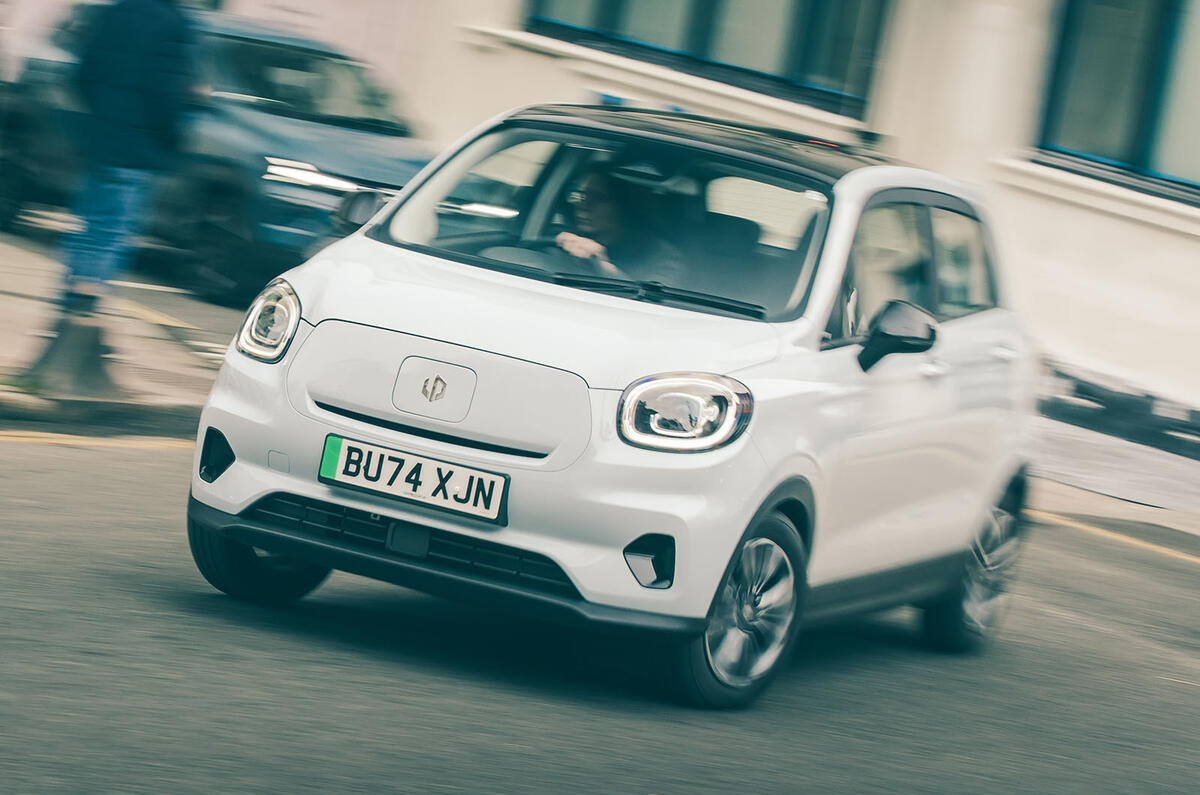
- Design8
- Interior7
- Performance8
- Ride & Handling8
- Costs9
Pros
Short wheelbase brings modest level of agility
Room for adults in the rear, thanks to its tall body
Enough performance for both city and motorway driving
Cons
Ride is a little unsettled at higher speeds
Irksome safety systems are a pain to turn off
Lack of physical buttons and switches frustrates
Price: £15,995
The Leapmotor T03 was so close to being named the UK’s cheapest EV, but it has come in just behind the Dacia Spring. That said, it’s still excellent value.
The truly affordable small car format needs both saving and electrifying, and the Dacia Spring no longer stands alone as its best hope.
This Chinese miniature gets a 37.3kWh battery for a range of 165 miles and a single front-mounted motor for 94bhp and 117lb ft of torque.
It will hit 0-62mph in 12.7sec, which sounds slow but is actually competitive with the other models listed in this top 10.
It’s roughly the same size as the petrol Kia Picanto, which means it’s fairly agile in the corners.
It’s also impressively equipped, with an 8.0in digital display behind the steering wheel and a 10in infotainment touchscreen with sat-nav.
Read our Leapmotor T03 review
Save money on a new Leapmotor T03 with What Car?
Finance this car with Drivenfi
5. Dacia Sandero Stepway
8
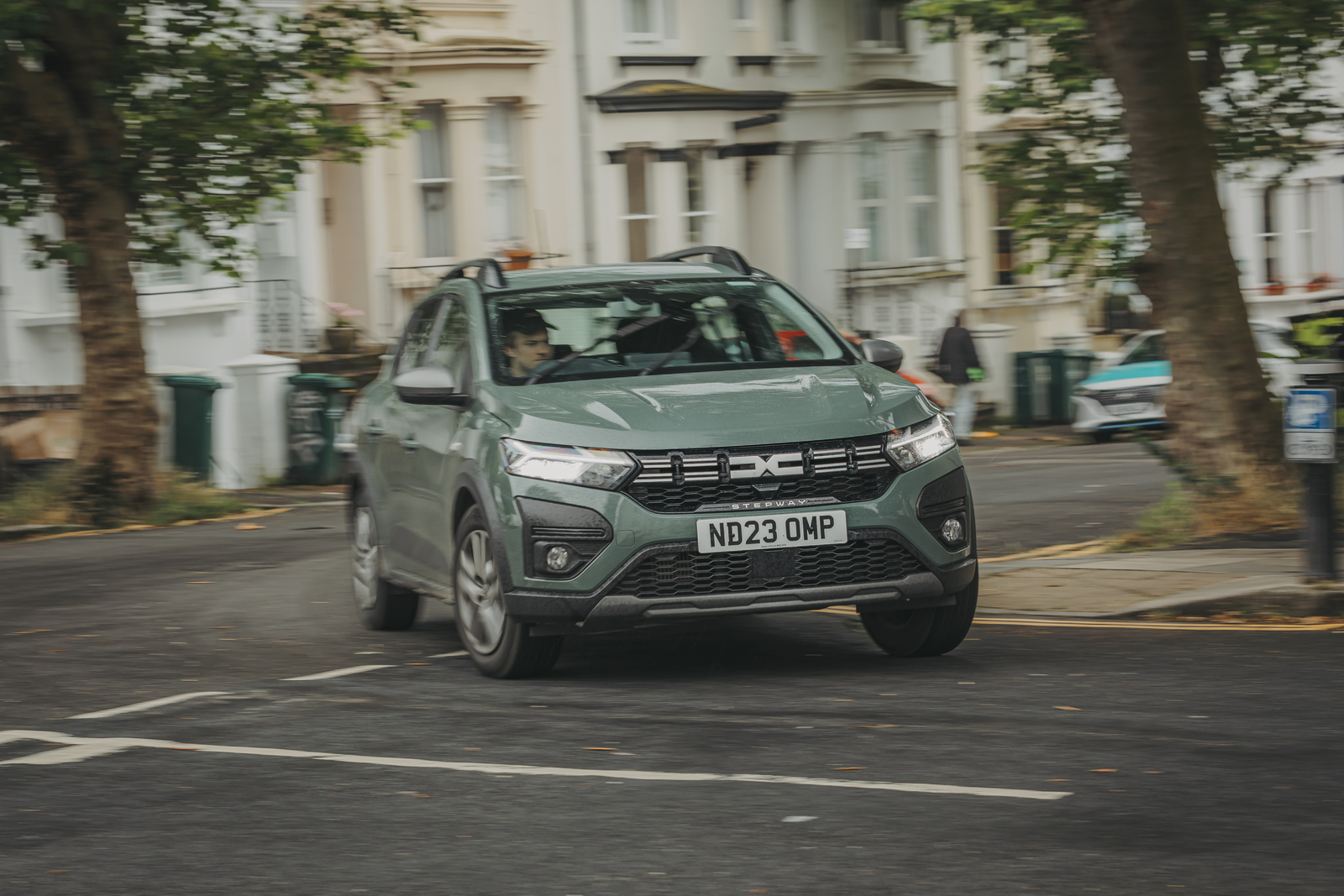
- Design8
- Interior7
- Performance7
- Ride & Handling8
- Costs9
Pros
Ergonomically sound
Spacious cabin
Frugal engines
Cons
Poor safety scores
Overly light steering
Relative lack of kit
Price: £15,700
The Dacia Sandero Stepway is an easy thing to grasp conceptually when you see the best-selling cars lists. Europeans love an SUV and the Stepway adds raised suspension, bigger bumpers and roof rails to the Sandero in order to make it more rugged-looking.
Any Sandero is a solid performer that stands great scrutiny against both new and used alternatives.
Like the regular Sandero, the Stepway is an ergonomic joy. Dead ahead from the driving seat are a set of clear dials, while a simple touchscreen flanks it to the left. Heating controls are physical dials – huzzah.
The Essential trim level lacks phone mirroring but does at least get you a phone holder.
As with the regular Sandero, you can choose LPG compatibility for no extra cost.
Read our Dacia Sandero Stepway review
Save money on a Dacia Sandero Stepway with What Car?
Finance this car with Drivenfi
Back to top
6. Kia Picanto
7
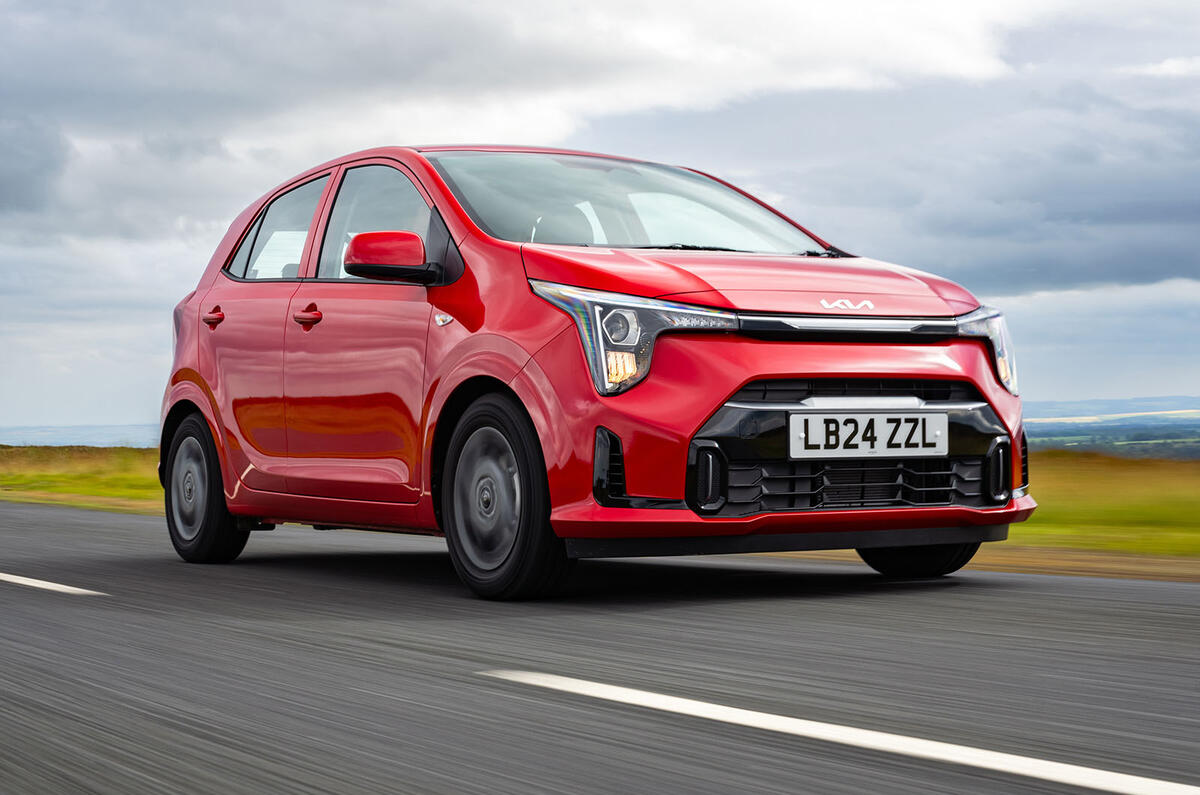
- Design7
- Interior7
- Performance6
- Ride & Handling7
- Costs8
Pros
Fun to drive
Interior is reasonably well appointed
Outstanding manual gearbox
Cons
Compromised driving position
The 1.0-litre engine is underpowered
Rivals are cheaper
Price: £15,845
The Picanto is Kia’s smallest model and competes with other city cars, such as the Toyota Aygo X and Hyundai i10, found elsewhere on this list.
The Picanto is a charming car that’s enjoyable to punt down a half-decent road and it has a grown-up, well-equipped cabin
There’s only one choice of engine, a naturally aspirated 1.0-litre petrol unit, meaning it’s among the cheapest cars to insure as well as to buy.
A sub-tonne kerb weight makes it a featherweight compared with other new cars, but with a mere 62bhp on tap it’s still pretty slow. The 0-60mph run takes around 15sec with the manual or more than 16sec with the automated manual frustratingly stirring away for you.
Your money will buy you a model in 1 spec, which means four seats and no niceties such as Apple CarPlay or Android Auto. But the Picanto does at least come with Kia’s seven-year/100,000-mile warranty.
Read our Kia Picanto review
Save money on a Kia Picanto with What Car?
Finance this car with Drivenfi
7. Hyundai i10
8
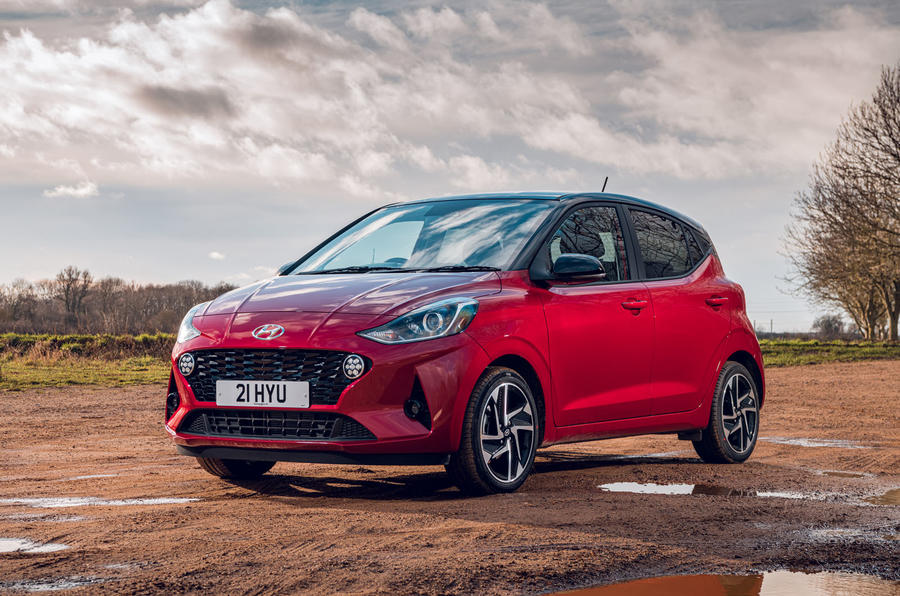
- Design8
- Interior7
- Performance7
- Ride & Handling8
- Costs9
Pros
Roomy in the rear
Good equipment levels
Spry handling
Cons
Disappointing safety rating
Entry-level engine is slow
Slow-witted automated manual gearbox
Price: £16,380
The i10 is a good old-fashioned city car – a class that many manufacturers are deserting – and is wonderful should you want something that’s cheap to run and easy to park.
The i10 has taken significant strides and now represents the very best and most well-rounded A-segment hatchback on sale.
Better yet, the interior is as well-made as cars from the class above. Other, larger cars on this list feel a bit tinny inside, but the little Hyundai borrows bits from posher models in the range.
Even bottom-ranking Advance trim level comes with Apple CarPlay and Android Auto.
It’s mechanically identical to the Kia Picanto, right down to the duff automated manual transmission.
Read our Hyundai i10 review
Save money on a Hyundai i10 with What Car?
Finance this car with Drivenfi
Back to top
8. MG 3
7
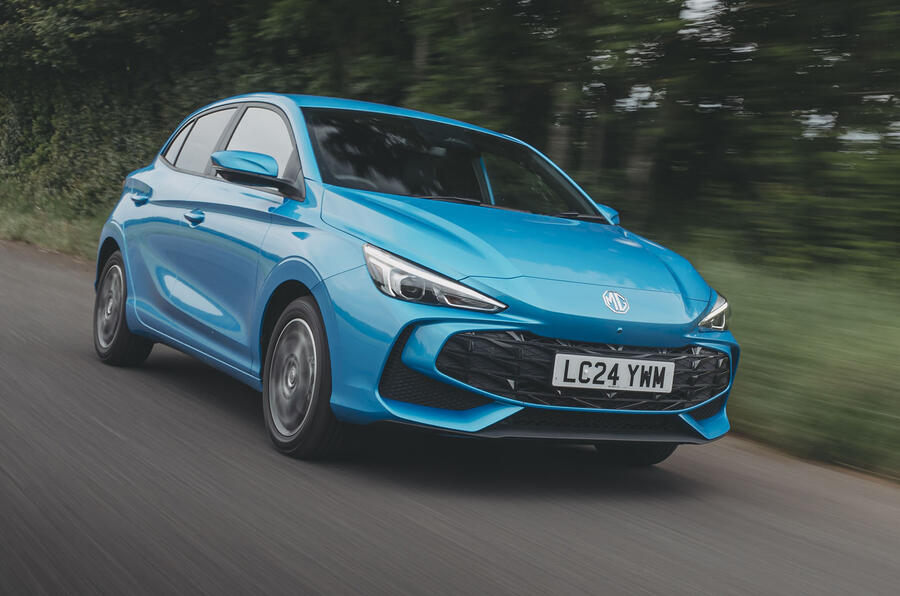
- Design7
- Interior6
- Performance8
- Ride & Handling6
- Costs8
Pros
Feels unstressed most of the time
Hybrid version available for the price of other petrol cars
Comfortable ride
Cons
Driver assistance needs refining
Lack of seating adjustment
Drab interior
Price: £16,495
Even when the second-generation MG 3 supermini was launched as a hybrid, it was one of the cheapest cars on sale in the UK, at just £18,495.
The new MG 3 is strong enough in most of the key areas, with no deal-breaking vices, to be well worth considering.
In 2025, however, the Chinese brand launched a pure-petrol version, reducing the entry price by £2000.
The petrol 3 is powered by a naturally aspirated 1.5-litre four-cylinder engine with 113bhp and 109lb ft, enabling it to hit 0-62mph in 10.8sec. Top speed is 115mph.
You shouldn’t rule out the hybrid, though, which is tremendous value for money. It combines a 1.5-litre petrol engine with a three-speed automatic gearbox, a 134bhp electric motor and a small battery.
Both versions of the 3 come with a seven-year/80,000-mile warranty.
Read our MG 3 review
Save money on an MG 3 with What Car?
Finance this car with Drivenfi
9. Toyota Aygo X
7
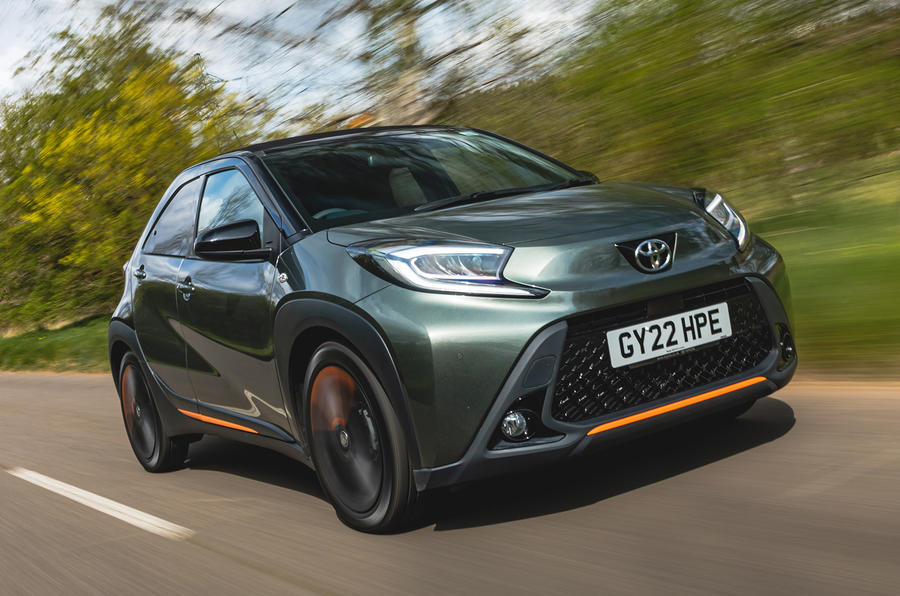
- Design8
- Interior7
- Performance6
- Ride & Handling7
- Costs8
Pros
Mature road manners
Long-distance comfort
Standard safety tech
Cons
Extremely slow
Expensive compared with rivals
Not especially roomy
Price: £16,515
The city car formerly known as the Aygo has grown up: the suffix X has theoretically turned the city car into a baby SUV.
For the most part, the Toyota Aygo X is an excellent small car. The interior is value motoring perfected.
In reality, it’s a larger car than the old Aygo but still a tiddler, despite sharing its platform with the Toyota Yaris. This means there’s enough room in the back for adults and the boot, at 231 litres, is a decent enough in size.
The ride, comfort and isolation are on par with those of a supermini – as is motorway stability. And the interior is light and airy.
Acceleration, however, is not a strong point. Against our stopwatch, it clocked a 0-62mph time of 16.7sec. The 71bhp 1.0-litre three-pot is severely lacking in torque and feels treacle-like up until 6500rpm.
Read our Toyota Aygo X review
Save money on a Toyota Aygo X with What Car?
Finance this car with Drivenfi
Back to top
10. Renault Clio
9
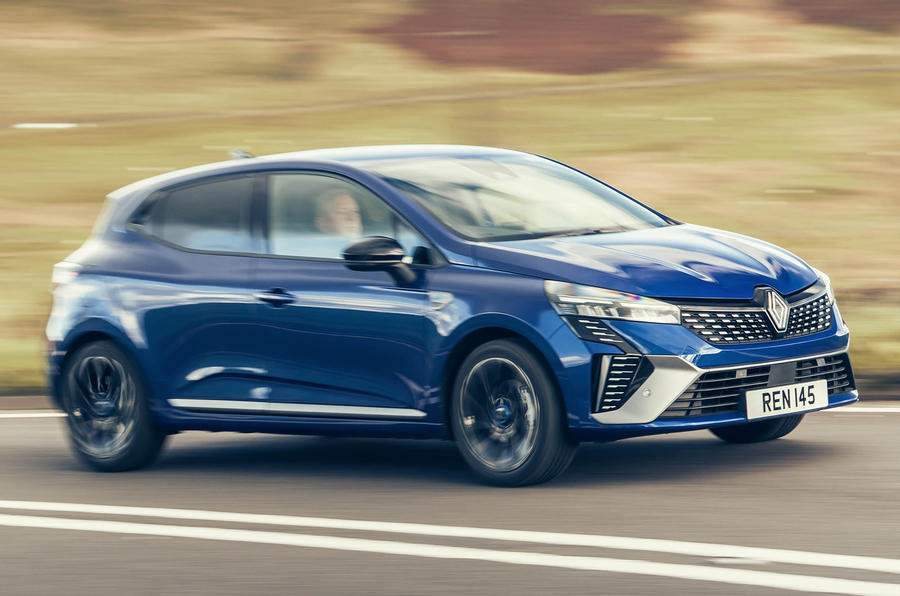
- Design9
- Interior8
- Performance8
- Ride & Handling9
- Costs8
Pros
Interior is among best in class
Petrol engine is agreeable
Agile handling
Cons
Ride isn’t as supple as we would like
Rear seats are cramped
Higher trim levels are expensive
Price: £18,595
A real quality choice here and the car we would choose from this list if we were buying one with our own money.
The Clio is a conversation for supermini class leadership in which it hasn’t been involved for some time.
The Clio’s cabin design and perceived quality are all much higher than you might imagine if you haven’t sat in one for a few years, while its steering is intuitive and its chassis gives a sense of cornering balance. In other words, it’s good fun.
The cheapest models don’t get Renault’s excellent hybrid powertrain, rather a three-cylinder 1.0-litre turbo petrol engine. It’s leisurely in its power delivery but very economical.



